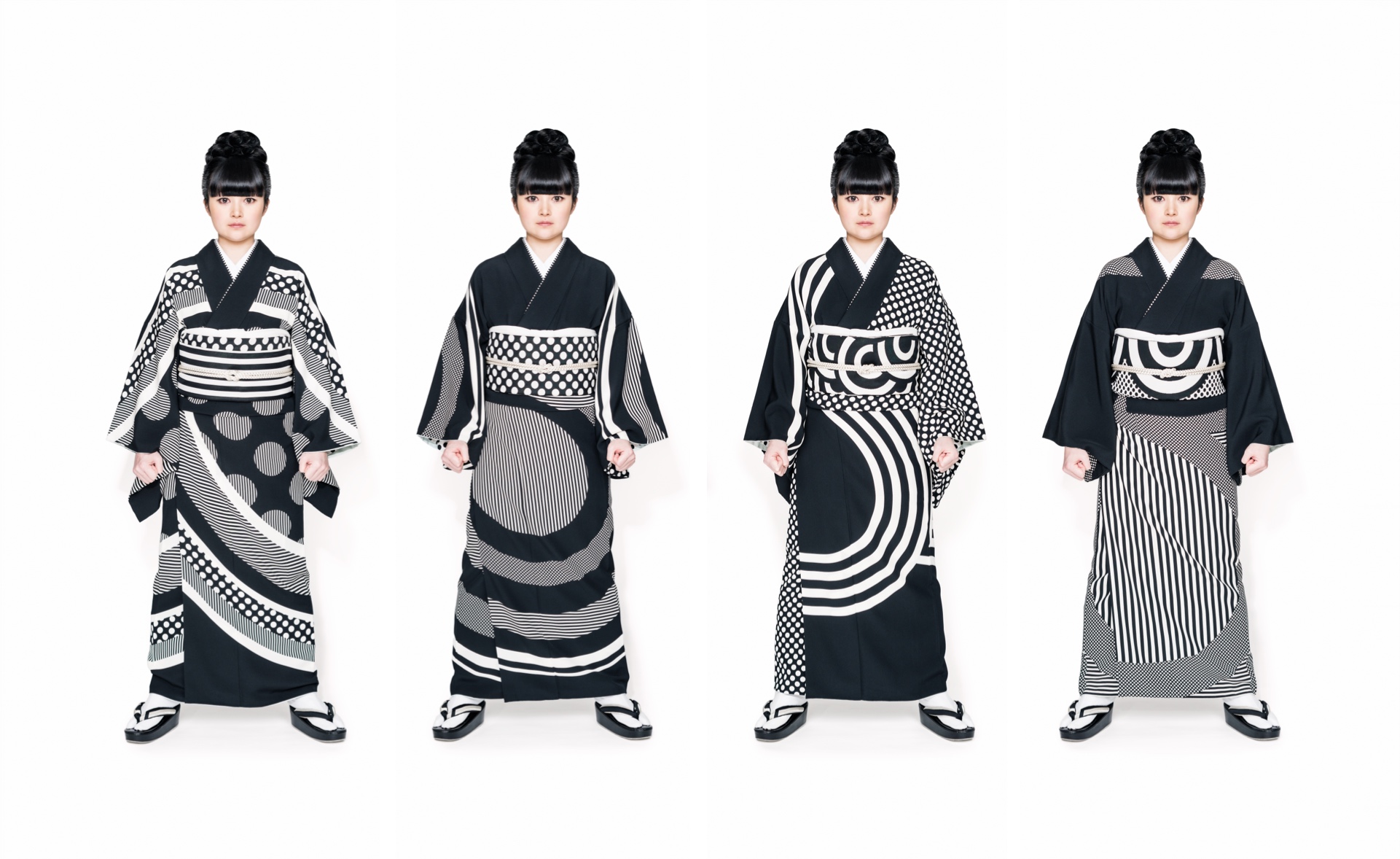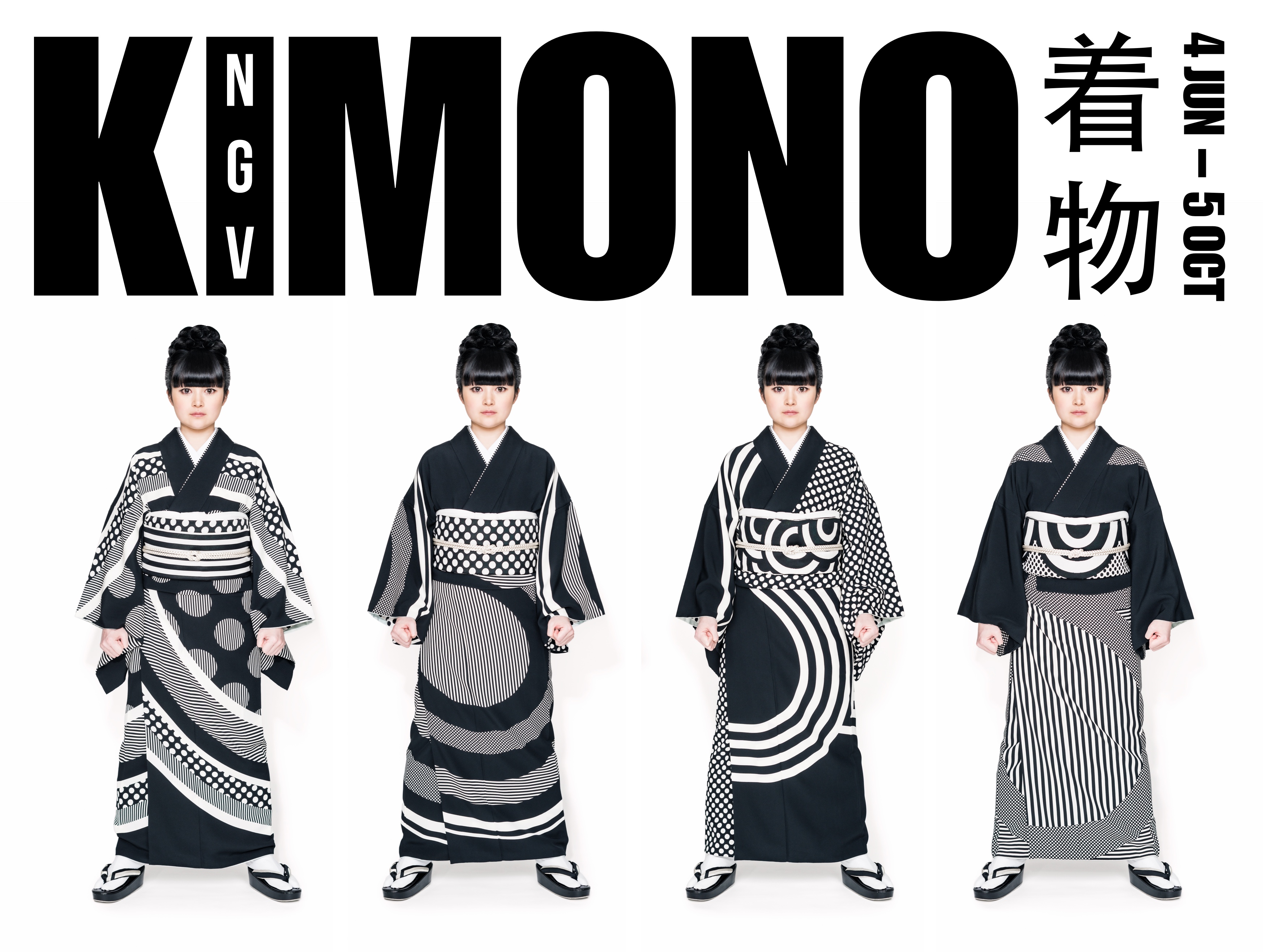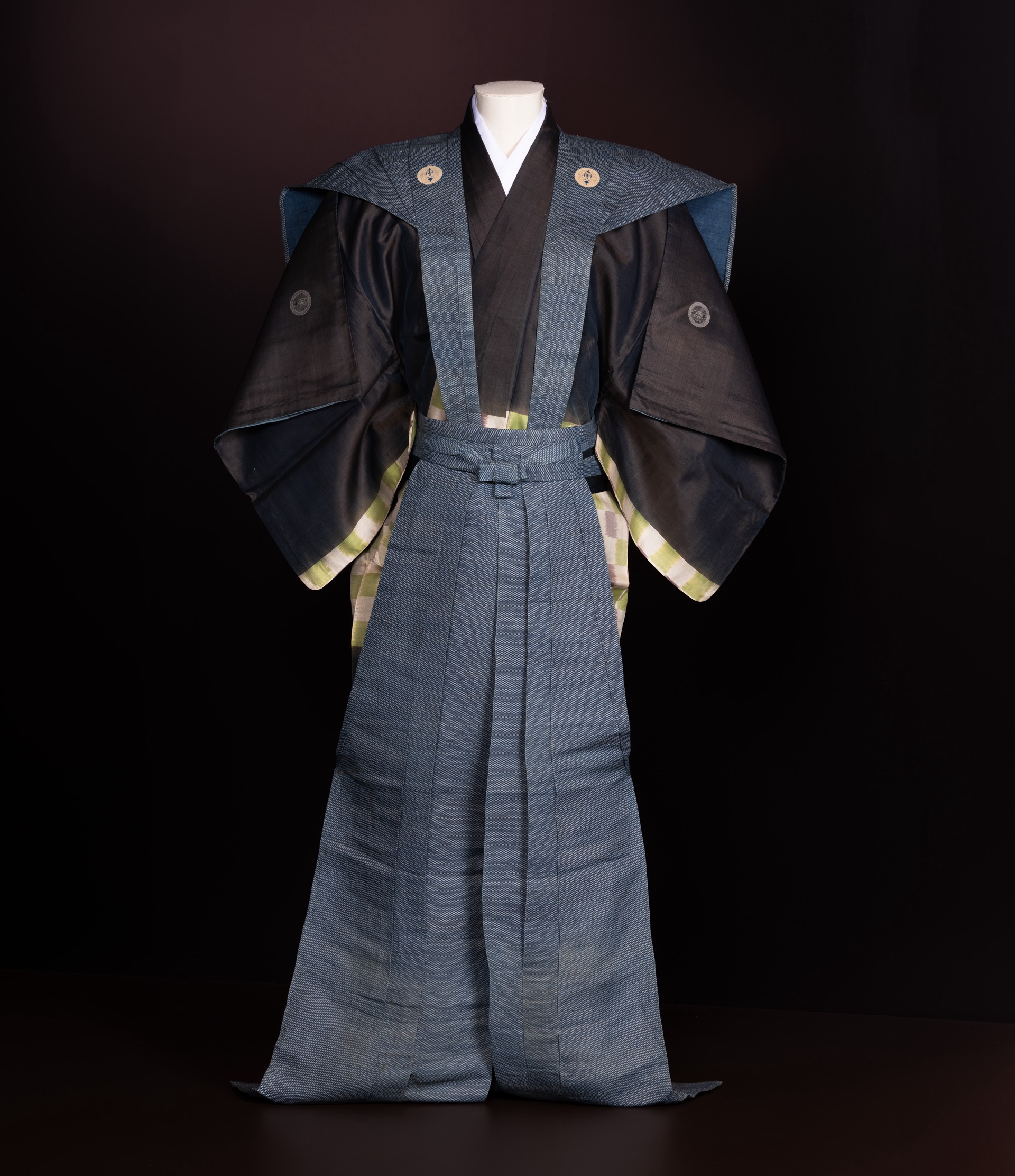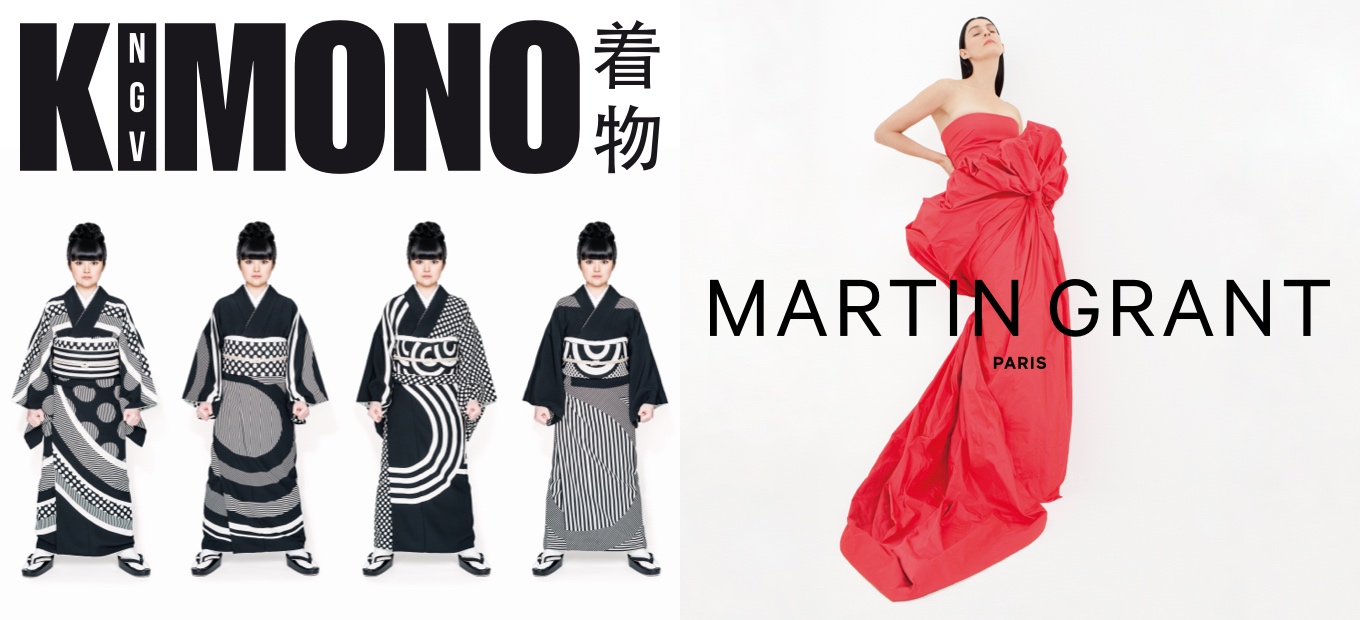A treasured item instilled with sentimental memories and cultural references for the people of Japan, and an artefact of wondrous design and beauty for those from outside of Japan, the kimono has become one of the most representative objects of Japanese art, design and culture.
A combination of two Japanese characters (着物) literally meaning ‘thing to wear’, the term ‘kimono’ only came into common use in the nineteenth-century. Early styles of uniquely Japanese women’s court costume known as jūnihitoe (twelve-layer robe) developed during the Heian period (794–1185); however, the earliest forms of kimono that we know today were the inner kosode and outer uchikake worn by the aristocracy from the Kamakura period (1185–1333) onwards. The opulence of these styles remains preserved in Noh theatre costumes.
It was during the financially prosperous Edo period (1600–1868) that the art of kimono production flourished. Samurai living in peaceful times, the economically booming merchant classes, and the festivals of farming and labouring tradespeople gave rise to technical innovations resulting in magnificent garments. Today, over two hundred years later, the kimono is experiencing renewed popularity in Japan, with groundbreaking young designers experimenting with new techniques, while internationally renowned designers inspired by kimono traditions present daring fashion statements to the world.






